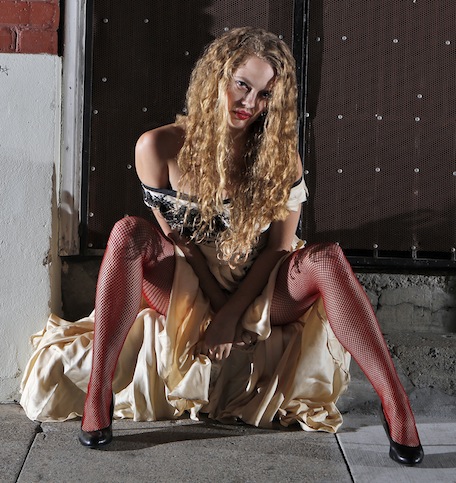
The shadowy sexuality of Lulu
West Edge Opera’s production of Alban Berg’s Lulu was just what one could hope for in an edgy, questioning portrayal of a decadent society’s use of sexual power and abasement – while shunning the repellant and retaining a certain gracefulness.
Written in the late 1920s, its completion derailed by Berg’s premature death in 1935, the opera tells the story of a young woman’s rise and fall, fueled by her unfeeling amorality and the lascivious corruption of the men around her. The opera’s story was based on two plays by the German playwright Frank Wedekind (1864–1918), Erdgeist and Die Büchse der Pandora.
Berg’s music is a fusion of lush lyricism and motifs that partake of Schoenberg’s 12-tone technique. It’s profoundly well suited to the emotional tensions and implicit social commentary of the libretto. The opera opens with a circus ringmaster introducing the characters – each identified with an animal. Lulu, the final creature in the menagerie, is the snake, famous for its cold-blooded sinuousness. And the archetypal tempter and symbol of evil.
Lulu – and what a part is Lulu! – was sung by Emma McNairy, who provided her character not only with convincing physical beauty, revealed in moments of full-frontal nudity, among others, but with an eyebrow-lifting, eye-popping ability to sing terrifyingly high notes strung out in musical phrases that retained a melodic line.
Director Elkhanah Pulitzer took full advantage of McNairy’s talents, providing opportunities for the soprano’s balletic and acrobatic skills. But then Pulitzer used everyone’s theatrical talents to the max, making for a truly remarkable performance of an Expressionist masterpiece. Lulu sported a series of wigs brilliantly designed by Sophia Smith. Costumes were by Christine Crook.
The three-act opera was divided in two halves, following the course of Lulu’s short and seamy life. In the first half she marries three times, bidding a loveless adieu to each of her husbands, all of whom die of lust and jealousy – their possessiveness driving them inexorably toward doom. In the second half, the singers who played Lulu’s husbands become three clients in her life as a down-and-out prostitute in the streets of London. Dr. Schön, her mentor and third husband, sung by the formidable bass-baritone Philip Skinner, becomes Jack the Ripper, and Lulu’s murderer. A physical realization of the role he played as the corrupting force in her life.
Bridging the opera’s two halves is a film interlude, by Jeremy Knight, accompanied only by music. The film, which was scripted into Berg’s libretto, shows Lulu’s imprisonment, her contracting cholera, and her escape through the wiles of her lesbian lover, the Countess Geschwitz, sung by the wonderful Buffy Baggott. Musically, the interlude is a palindrome. Half way through, the music reverses and, note by note, runs backwards.
Appearing as an enigmatic purveyor of evil was Schigolch sung by former Adler Fellow Bojan Knezevic, who sang the title role in Opera Parallele’s production Berg’s Wozzeck. Alexander Boyer, Michael Jandosky and Erin Neff sang multiple roles in this vocally challenging opera.
Musical Director Jonathan Khuner led the 20-member band in Eberhard Kloke’s reduction of Berg’s original score, which had been completed by Friedrich Cerha in 1976 after the death of Berg’s widow. Khuner, as always, draws exceptional performances from his musicians, taking advantage of the Bay Area’s excellent singers and musicians.
For the venue, West Edge Opera chose the old train station located at 16th and Wood streets in Oakland. Built in 1912, it’s one of those fabulous buildings found in Oakland, grand in gesture and spacious in dimensions. With the demise of the electric trains the station was abandoned. But it remains beautiful, even with peeling paint and cracked walls. An appropriate choice of a venue for this compact re-visioning of Berg’s dark and elegantly satiric opera.
– Jaime Robles
Photo: Emma McNairy as Lulu.
